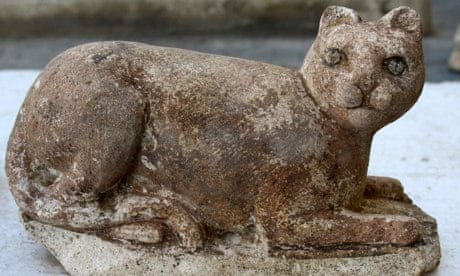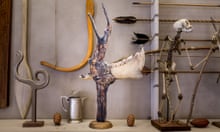A cat-and-mouse game played out in a Chinese village 5,300 years ago is helping scientists understand how wild felines became the tame pets we know today.
Scientists believe it was the cat's appetite that led to domestication. Grain stored by ancient farmers was a magnet for rodents, which in turn attracted wild cats. Over time, the cats adapted to village life and became tame around their human hosts.
This is, at least, the leading theory, derived from archaeological evidence in the Middle East, rather than China. But bones recently discovered in a Chinese village add weight to the idea that felines took on pest-control duties in ancient times, says researcher Fiona Marshall of Washington University in St. Louis.
Marshall co-authored a report on fossil research, published online by the Proceedings of the National Academy of Sciences.
The study, focused on an agricultural village in northern China, sheds light on the poorly understood history of felines. The earliest extant representations of domesticated cats originated in Eygpt over 1,000 years later.
Researchers found evidence that rodents threatened the village grain supply by burrowing into storage vessels that were designed to keep them out.
The ancient feline bones revealed chemical signatures indicating the animals had eaten rodents that in turn fed on millet, a grain crop known to be harvested by the villagers.
It is possible the cats were not wild, but rather were domesticated elsewhere and brought in for pest-control purposes, Marshall said. Either way, the ancient bones help fill a gap in the hypothesis of feline domestication, she said.
Greger Larson of Durham University, UK called the new research "an important step forward" in an area that has previously attracted less study than the domestication of dogs, pigs and sheep.



